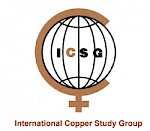Copper’s role in the past, present and future of civilization is clear in history books, current studies and future predictions; it is one of the oldest used metals and its uses continue to grow. It functions in everything from electrical and thermal conductivity, to healthcare, to construction and infrastructure, to equipment. Copper is one of the most diverse metals on the planet, due to it’s key physical properties:
- Corrosion resistance
- Excellent conductor for heat and electricity
- Malleable and ductile
Copper Mining Industry
Uses of Copper
Copper has a number of different applications. It is used across various industry segments ranging from construction, electrical network wiring, consumer to transport and industrial machinery. Copper is the best non‐precious metal conductor of electricity as it encounters much less resistance compared with other commonly used metals. It sets the standard to which other conductors are compared. Copper is also used in power cables, either insulated or uninsulated, for high, medium, and low voltage applications. In addition, copper's exceptional strength, ductility, and resistance to creeping and corrosion makes it the preferred and safest conductor for commercial and residential building wiring. It is a key component of energy efficient generators, motors, transformers and renewable energy production systems. Renewable energy sources such as solar, wind, geothermal, fuel cells and other technologies are all heavily reliant on copper due to its excellent conductivity. All major forms of transportation depend on copper to perform critical functions. Copper‐nickel alloys are used on the hulls of boats and ships to reduce marine befouling, thereby reducing drag and improving fuel consumption. Automobiles and trucks rely on copper motors, wiring, radiators, connectors, brakes and bearings.
Beyond simple mechanics, copper is much more relevant to the future of renewable energy and a post-COVID world. Copper is essential to health and has antimicrobial properties which are currently being tested in urban high-touch zones. It promotes a circular economy through its ability for repeated recycling with no quality loss. For more information about Copper and its relevance to our future, visit the Copper Alliance's website About The Copper Industry page.
Demand
The global demand for copper continues to grow: world refined usage has more than tripled in the last 50 years attributable to expanding sectors such as electrical and electronic products, building construction, industrial machinery and equipment, transportation equipment, and consumer and general products. A significant proportion of demand is driven by China which makes up approximately 50% of annual total copper demand. The unprecedented COVID-19 pandemic that emerged in early 2020 significantly impacted both copper supply and demand and it is expected that its influence will continue to have medium-long term implications. However, the fundamental demand for copper remains strong drawing from recovery in Chinese demand, significant progress on vaccines, and expectations of a green, copper intensive recovery which has also attracted significant investor interest.
 Arizona Mining Association https://www.azmining.com/use-of-arizona-minerals/
Arizona Mining Association https://www.azmining.com/use-of-arizona-minerals/
 World Copper Factbook: https://copperalliance.org/wp-content/uploads/2021/01/2020_10_13_ICSG_Factbook_2020.pdf
World Copper Factbook: https://copperalliance.org/wp-content/uploads/2021/01/2020_10_13_ICSG_Factbook_2020.pdf
 US Geological Society Copper Facts: https://www.usgs.gov/centers/nmic/copper-statistics-and-information
US Geological Society Copper Facts: https://www.usgs.gov/centers/nmic/copper-statistics-and-information
 Canadian Copper Facts: https://www.nrcan.gc.ca/our-natural-resources/minerals-mining/minerals-metals-facts/copper-facts/20506
Canadian Copper Facts: https://www.nrcan.gc.ca/our-natural-resources/minerals-mining/minerals-metals-facts/copper-facts/20506
 Copper.org: https://www.copper.org/
Copper.org: https://www.copper.org/
 The Copper Alliance: https://copperalliance.org/
The Copper Alliance: https://copperalliance.org/


